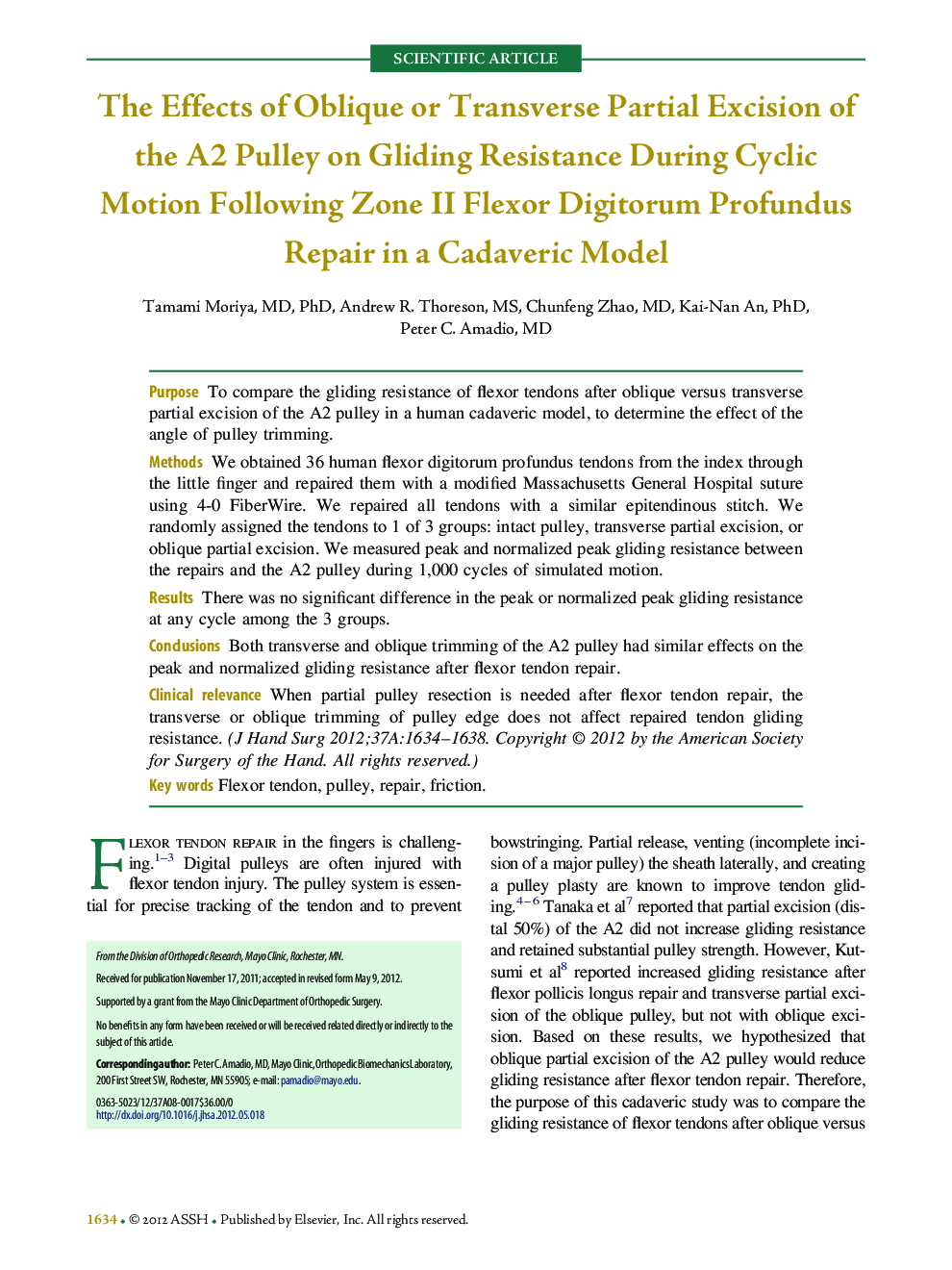| Article ID | Journal | Published Year | Pages | File Type |
|---|---|---|---|---|
| 4067545 | The Journal of Hand Surgery | 2012 | 5 Pages |
PurposeTo compare the gliding resistance of flexor tendons after oblique versus transverse partial excision of the A2 pulley in a human cadaveric model, to determine the effect of the angle of pulley trimming.MethodsWe obtained 36 human flexor digitorum profundus tendons from the index through the little finger and repaired them with a modified Massachusetts General Hospital suture using 4-0 FiberWire. We repaired all tendons with a similar epitendinous stitch. We randomly assigned the tendons to 1 of 3 groups: intact pulley, transverse partial excision, or oblique partial excision. We measured peak and normalized peak gliding resistance between the repairs and the A2 pulley during 1,000 cycles of simulated motion.ResultsThere was no significant difference in the peak or normalized peak gliding resistance at any cycle among the 3 groups.ConclusionsBoth transverse and oblique trimming of the A2 pulley had similar effects on the peak and normalized gliding resistance after flexor tendon repair.Clinical relevanceWhen partial pulley resection is needed after flexor tendon repair, the transverse or oblique trimming of pulley edge does not affect repaired tendon gliding resistance.
